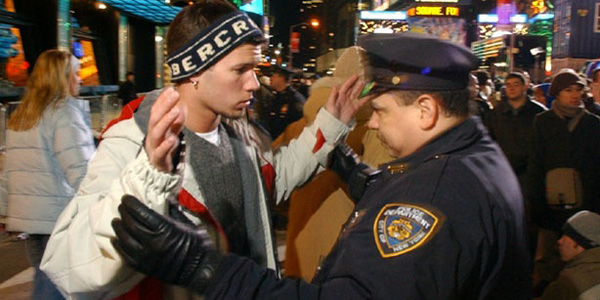Sentiment Grows Against “Stop and Frisk”
May 25, 2012
The campaign against the New York Police Department’s stop-and-frisk policy is bearing fruit. A host of the city’s elected officials and civic leaders have called for reform or abolition of the practice, including all of those seeking the Democratic nomination for mayor next year.
RSVP for Silent March
On May 16, Federal District Court Judge Shira A. Scheindlin granted class-action status to a lawsuit challenging the NYPD’s stop-and-frisk tactics. The judge stated in her ruling that she was disturbed by the city’s “deeply troubling apathy towards New Yorkers’ most fundamental constitutional rights.” The decision opens the door to legal recourse by the hundreds of thousands of New Yorkers who have been stopped.
Sentiment against stop-and-frisk has also been influenced by the press coverage that has been generated by the broad coalition of labor and rights organizations that are sponsoring a Father’s Day silent march in Manhattan against the stop-and-risk policies. 1199SEIU is an initiator of the action.
Even former police officers have admitted that commanders force officers to make as many stops and to write as many summonses as possible. “Some, like John Eterno, a retired police captain and chairman of the criminal justice department at Molloy College on Long Island, have talked openly about a “quota system” for stops, which department leaders deny,” The New York Times reported on May 12.
The total number of police stops rose from 97,000 in 2002, Mayor Michael Bloomberg’s first year in office, to 685,724 in 2011, a more than 600 percent increase with only a slight increase in recovered illegal firearms, the New York Civil Liberties Union (NYCLU) has found. Some 87 percent of those stopped were Black or Latino.
Earlier this month, The NYPD revealed that they had made more than 200,000 stop-and-frisks in the first three months of 2012, placing the Bloomberg administration on course for the largest number of annual stops in the 10 years the department has been measuring them.
The city has repeatedly argued that the program helps to keep guns off the street, but the huge increase in street stops and interrogations has done little to remove firearms – the ostensible reason for stop-and-frisk. No gun is retrieved in 99.9 percent of the stops.
One day after Judge Scheindlin’s ruling, NYPD Commissioner Raymond Kelly in a letter to NYC Council President Christine Quinn outlined new procedures that the NYPD would take to “increase public confidence” in the Department.
“It’s clear the police commissioner is feeling political pressure around the NYPD’s abusive stop-and-frisk program, but this response is nothing more than a desperate public relations attempt,” said NYCLU Exec. Dir. Donna Lieberman. She called Commissioner Kelly’s response PR not reform.
The NYCLU also has debunked the notion that stop-and-frisk is behind the reduction of violent crime. While violent crimes fell 29 percent in NYC from 2001 to 2010, other large cities had larger reductions without the use of stop and frisk. During the same 10-year period, violent crimes fell 59 percent in Los Angeles, 56 percent in New Orleans, 49 percent in Dallas and 37 percent in Baltimore.
1199SEIU members are urged to attend the June 17 Father’s Day silent march with family and friends. Marchers will gather at 1 p.m. on 110th Street between Fifth and Lenox Avenues.


